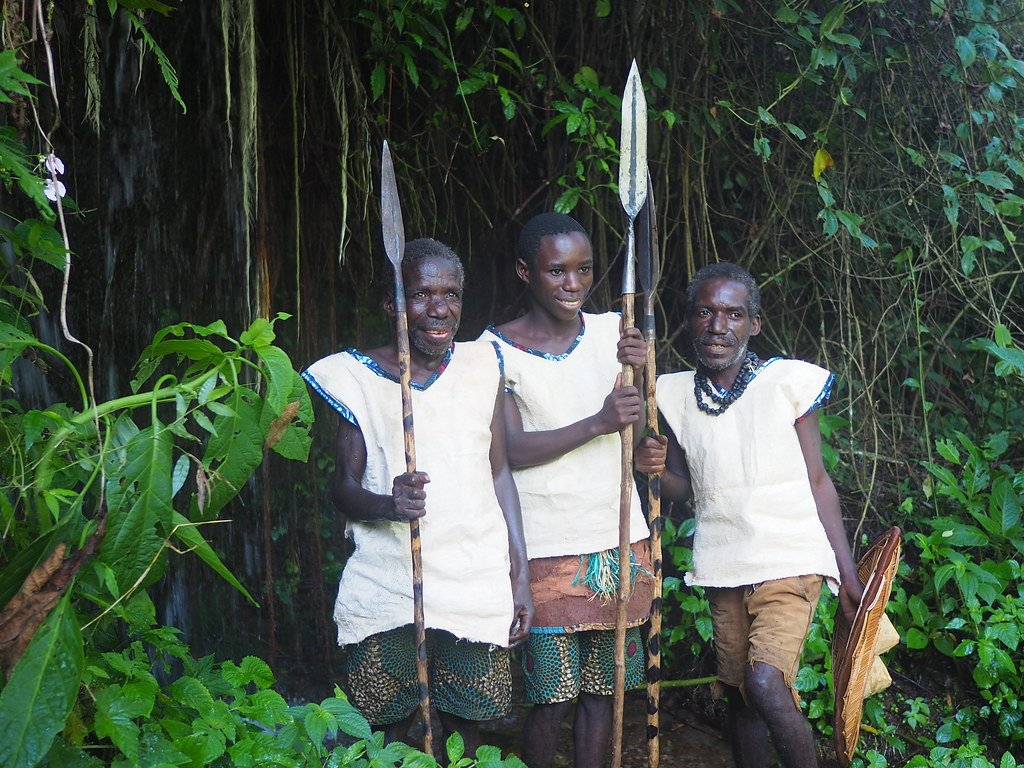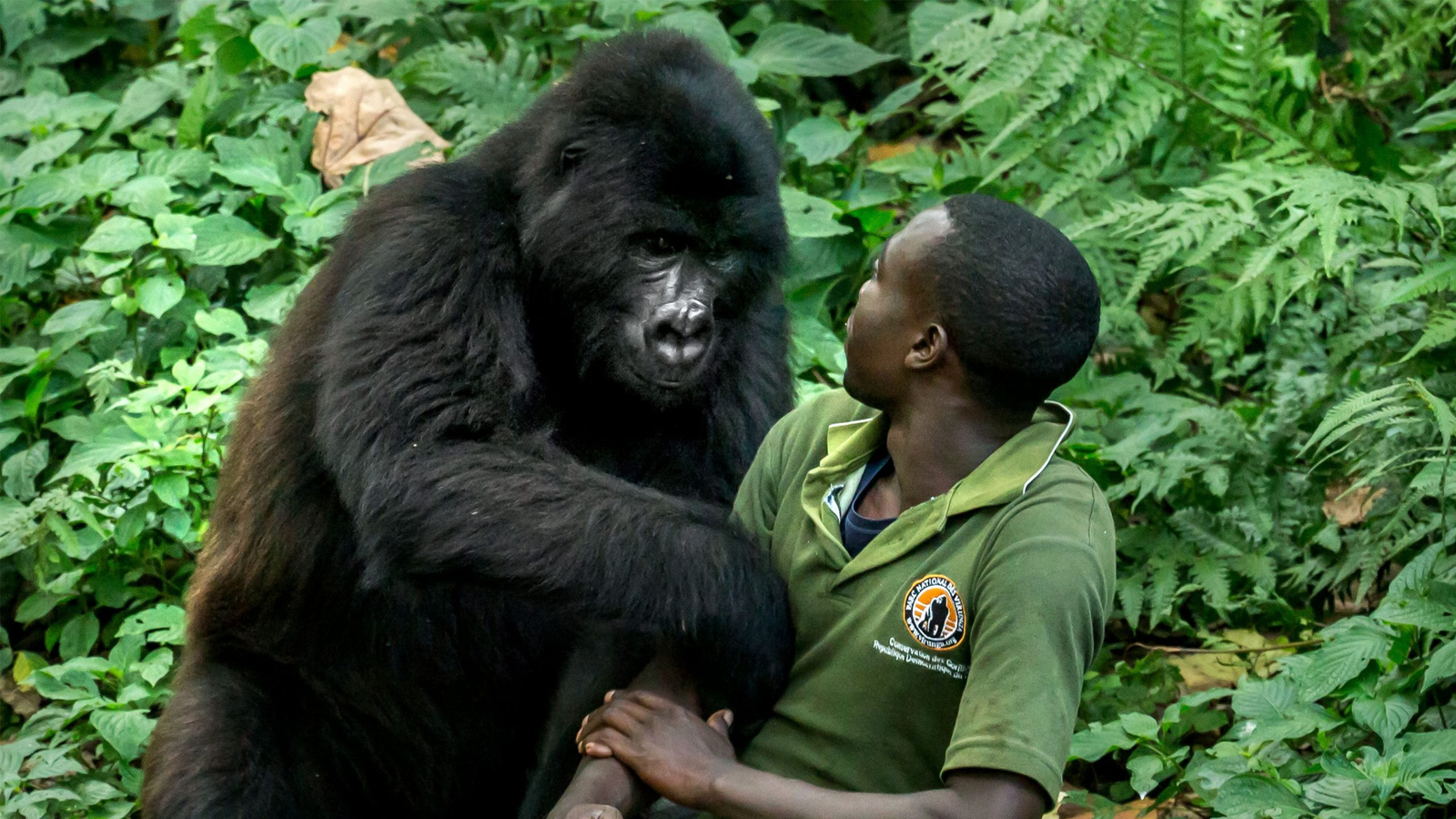Way Of Life of The Batwa People in Bwindi National Park
The Batwa people, also known as the Twa or Pygmies, are an indigenous group of people who historically inhabited the rainforests of Central Africa, including areas within the Bwindi Impenetrable National Park in Uganda.
They are one of the last groups of hunter-gatherers in the world and have a unique cultural and social identity.

Bwindi Impenetrable National Park is located in southwestern Uganda and is known for its rich biodiversity, including being a habitat for almost half of the world’s population of mountain gorillas. The Batwa people had been living in and around Bwindi for generations, depending on the forest for their livelihoods and cultural practices.
However, their traditional way of life and reliance on the forest for resources clashed with the conservation efforts aimed at protecting the endangered mountain gorillas and preserving the park’s ecosystem.
As a result, in the early 1990s, the Ugandan government, with support from various conservation organizations, implemented measures to protect the park, including the eviction of the Batwa people from their ancestral lands.
This displacement led to significant challenges for the Batwa community, as they were forced to abandon their traditional lifestyle and adapt to new ways of living outside the forest. Many faced issues such as poverty, lack of access to education and healthcare, and a loss of cultural identity.
Efforts have been made by both governmental and non-governmental organizations to address the challenges faced by the Batwa people.
These efforts include providing support for education, healthcare, skills training, and cultural preservation programs. However, the situation remains complex, and there is ongoing debate about the balance between conservation efforts and the rights of indigenous communities like the Batwa.
Here is an overview of their traditional way of life:
Hunter-Gatherer Lifestyle:
The Batwa traditionally lived as hunter-gatherers, relying on the forest for their livelihood. They hunted animals, such as small mammals and birds, and gathered a variety of forest resources like fruits, honey, and medicinal plants.
Their deep knowledge of the forest allowed them to sustain themselves in this challenging environment.
Shelter and Housing:
The Batwa constructed temporary shelters made from leaves, branches, and other natural materials found within the forest. These shelters were simple and easy to assemble, allowing them to move from place to place as they followed seasonal resources.
Cultural and Spiritual Practices:
The Batwa have a rich cultural heritage that includes storytelling, music, dance, and rituals. Their spiritual beliefs are often intertwined with the forest, and they hold various rituals to honour the spirits of the forest and seek protection from natural forces.
Social Structure:
Traditionally, the Batwa lived in small, close-knit communities led by elder members. Decision-making and leadership were often based on the wisdom and experience of the elders.
Let’s delve deeper into the traditional social structure of the Batwa people and their emphasis on the role of elders in decision-making and leadership:
- Small Close-Knit Communities: The Batwa lived in relatively small communities, often consisting of extended families. These communities were tightly connected due to their reliance on each other for survival within the forest environment. The small size of these groups facilitated close relationships and effective communication.
- Elder Wisdom: Elders held a revered position within the Batwa society. Their age and life experience were highly respected, and they were considered repositories of valuable knowledge about the forest, hunting techniques, medicinal plants, and cultural traditions. Their role extended beyond decision-making to being teachers and guides for younger generations.
- Decision-Making Process: In matters of communal importance, decisions were made through discussions within the community. These discussions often took place around the fire or in communal gathering spaces. Elders played a central role in these discussions, providing guidance, sharing their experiences, and offering advice based on their deep understanding of the forest and the community’s needs.
- Consensus and Collaboration: The Batwa valued consensus and collaboration in decision-making. While elders provided guidance, decisions were typically reached through a process of open dialogue where community members had the opportunity to express their opinions. The goal was to find solutions that benefited the entire community and maintained harmony.
- Leadership Role of Elders: Elders were often recognized as informal leaders within the community. Their leadership was not based on formal titles or hierarchical structures, but rather on their earned respect and the trust they garnered over time. They were consulted on various matters, ranging from hunting expeditions to settling disputes.
- Oral Tradition and Passing Down Knowledge: The Batwa relied heavily on oral tradition to pass down their cultural and practical knowledge from one generation to the next. Elders were the primary storytellers, sharing myths, legends, and historical accounts that conveyed important lessons, cultural values, and survival skills. This ensured the continuity of their unique way of life.
- Cultural Preservation: Elders played a critical role in maintaining and preserving Batwa cultural practices. They taught younger generations traditional dances, songs, and rituals, ensuring that the cultural heritage of the community was passed down intact.
- Respect for Elders: Respect for elders was deeply ingrained in Batwa culture. Children were taught from a young age to show deference and obedience to their elders. This respect extended beyond the immediate family to include all members of the community.
It’s important to recognize that while these traditional practices were central to the Batwa way of life, their social structure and cultural practices have been significantly impacted by external factors, including displacement from their ancestral lands, changes in livelihood patterns, and interactions with neighboring communities and modern institutions.
As a result, the traditional social dynamics may have evolved or adapted over time. Efforts to preserve and celebrate the Batwa cultural heritage aim to maintain the essence of their social structure and values while addressing contemporary challenges.
Gender Roles:
Both men and women contributed to the survival of the community. Men were typically responsible for hunting, while women gathered food and took care of domestic tasks.
Art and Craftsmanship:
The Batwa are known for their skilled craftsmanship. They create intricate items like baskets, mats, and tools using natural materials found in the forest. These items were often used for trade with neighboring communities.
Challenges and Changes:
The establishment of national parks and protected areas, including Bwindi Impenetrable National Park, has had a significant impact on the Batwa way of life.
Conservation efforts aimed at protecting the forest and its biodiversity often led to the displacement of the Batwa from their ancestral lands. This has resulted in cultural loss, loss of livelihoods, and challenges in adapting to modern lifestyles.
Efforts for Cultural Preservation:
In recent years, there have been efforts to address the challenges faced by the Batwa. Initiatives have been launched to empower the Batwa community through education, healthcare, and cultural preservation programs. Some programs aim to incorporate Batwa perspectives into conservation strategies while also respecting their cultural heritage.
Please note that due to the dynamic nature of cultures and the impact of various external factors, there are always changes in the lives of the Batwa people.




